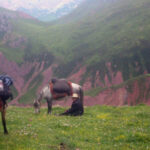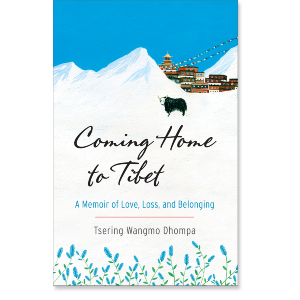On 14 April 2010, my aunt was wrapping up her prayers and enjoying her morning tea when she felt the windows in her room rattle and the bed beneath her shift. She ran out of her room to join the rest of the family in the yard.
“Tsering Wangmo, Kyegu is gone. Everything is gone and I am still here,” she said when I managed to get through to her by phone, hours after an earthquake hit the town of Kyegu.
Tashi could not describe what had happened to the houses on her street. She could not see very far; dust hung in myriad shapes in the air. She had lived on this street for two decades and it was now unrecognizable.
Every family in Kyegu lost a loved one or knew someone who was killed. The neighbor across the street dug into the debris of his house with his hands, hoping his wife, daughter-in-law, and his young grandchildren would still be alive.
The living moved into canvas tents. Many of my relatives lived in tents for as long as three years.
I have not been able to visit my family since 2009. An employee at the Chinese consulate in San Francisco reminded me in 2010 that she was not obliged to give me a reason, when I asked why I was denied a visa two years in a row.
When I do visit Kyegu, I will have to acquaint myself to its new shape. My aunt’s neighbor’s family will not be there. The streets of “the town of nine lives” will not be the same as I have recorded in the pages of this book.
The memory of the town is not erased but has merely been rearranged, I tell myself. The new has traces of the old. New injuries build on the old. When I return to the towns and villages of Amdo, Golog, and Yushu, I will hear the stories and the names of Tibetans—over a hundred in number—who have sacrificed their lives by immolating themselves. Their names are part of the
narratives of these villages and towns. And, of Tibet.
It is not possible to speak of death, someone else’s death, in the ways I have already attempted in this book. The wide, deceptively empty spaces of the high grasslands can no longer be categorized as just beautiful stretches of land. They are also spaces of continuing protest or contestation. It does not suffice to speak of someone else’s death, to inscribe meaning, to speak of the past and future solely through the custom of the old language and religion. We must find a language that responds to the present reality where it is possible to speak of the present only if we give it up. A language that seeks to understand what it means when an individual takes death to be hope for the future. What does it say about the possibilities of the future? How do we read the silence framing the self-immolations and in what language and register must we learn to respond? Are we listening to the aspirations of Tibetans inside Tibet to guide policies toward a future for all Tibetans?mem


